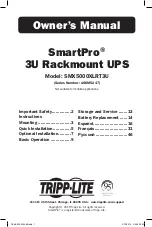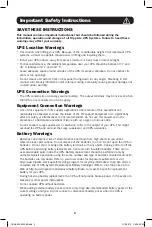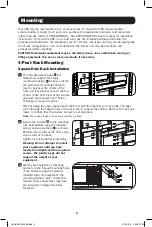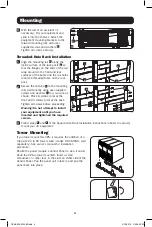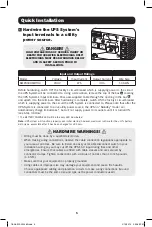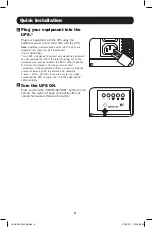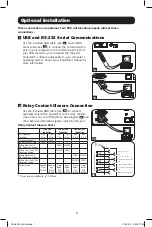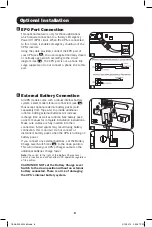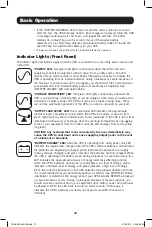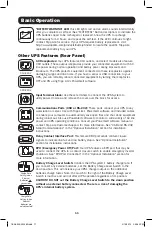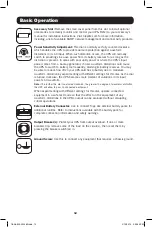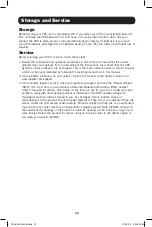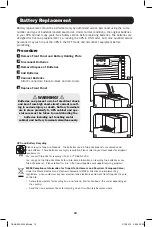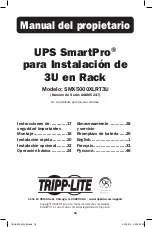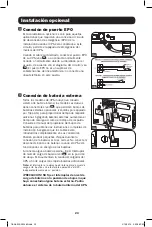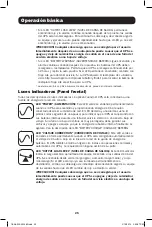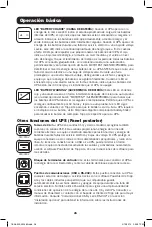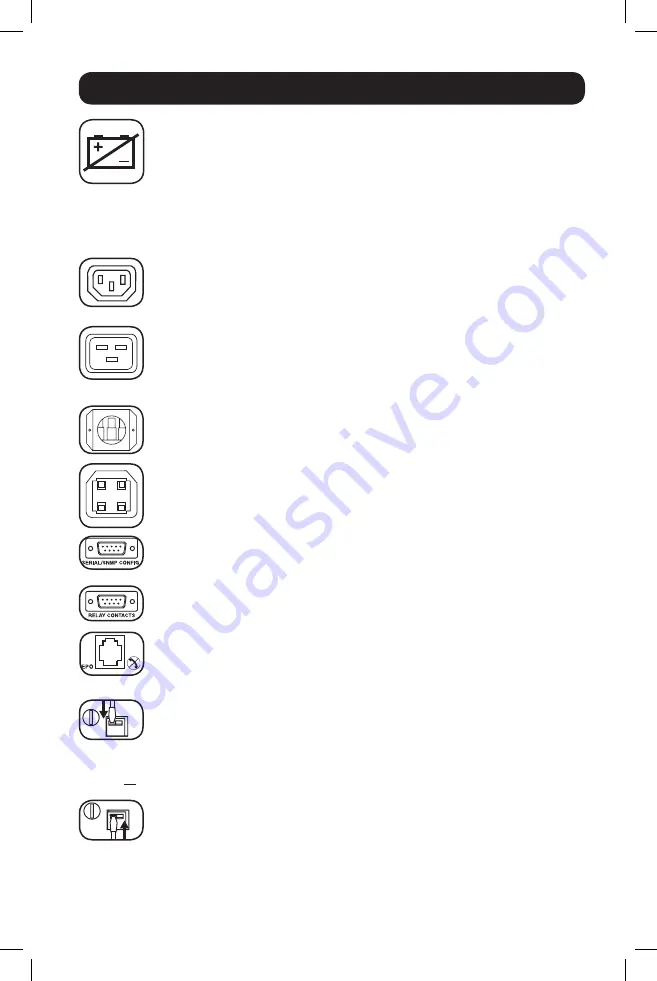
11
Basic Operation
“BATTERY WARNING” LED:
this LED lights red and an alarm sounds intermittently
after you complete a self test (See “MUTE/TEST” Button description) to indicate the
UPS batteries need to be recharged or replaced. Allow the UPS to recharge
continuously for 12 hours, and repeat the self-test. If the LED continues to light,
contact Tripp Lite for service. If your UPS requires battery replacement, visit
http://www.tripplite.com/products/battery-finder/ to locate the specific Tripp Lite
replacement battery for your UPS.
C13/230V
C19/230V
Charge Rate
Setting (when
External
Batteries are
not connected)
Charge Rate
Setting (when
External
Batteries are
connected)
Other UPS Features (Rear Panel)
AC Receptacles:
Your UPS features C13 outlets, and select models also feature
C19 outlets. These output receptacles provide your connected equipment with AC
line power during normal operation and battery power during blackouts and
brownouts. The UPS protects equipment connected to these receptacles against
damaging surges and line noise. If you have a serial or USB connection to your
UPS, you can remotely reboot connected equipment by turning the receptacles
OFF and ON using Tripp Lite’s PowerAlert software.
Input Terminal block:
Use these terminals to connect the UPS System to
utility power. Unscrew and remove the cover over the block for access.
Communications Ports (USB or RS-232):
These ports connect your UPS to any
workstation or server. Use with Tripp Lite’s PowerAlert software and included cables
to enable your computer to automatically save open files and shut down equipment
during a blackout. Also use PowerAlert software to monitor a wide variety of AC line
power and UPS operating conditions. Consult your PowerAlert software manual or
contact Tripp Lite Customer Support for more information. See “USB and RS-232
Serial Communications” in the “Optional Installation” section for installation
instructions.
Relay Contact Interface Port:
This female DB9 port sends contact-closure
signals to indicate line-fail and low battery status. See “Optional Installation”
section for installation instructions.
EPO (Emergency Power Off) Port:
Your UPS features a EPO port that may be
used to connect the UPS to a contact closure switch to enable emergency inverter
shutdown. See “EPO Port Connection” in the “Optional Installation” section for
more information.
Battery Charge Level Switch:
Controls the UPS system’s battery charge rate. If
you connect any external batteries, set the Battery Charge Level Switch to the
down position. This will increase your UPS’s charger output so the additional
batteries charge faster. Note: the switch to the right of the Battery Charge Level
Switch is inactive and will not affect UPS operation regardless of its position.
CAUTION! DO NOT set the Battery Charge Level Switch to the down position
without an external battery connected. There is a risk of damaging the
UPS’s internal battery system.
18-08-323-932460.indb 11
2/13/2019 2:53:49 PM
Summary of Contents for AGSM5247
Page 48: ...48 1 A B 1 2 3 A C C A B B 2 B C 3 18 08 323 932460 indb 48 2 13 2019 2 54 08 PM ...
Page 49: ...49 4 D 4 D 1 A B 2 A C 1 B A A B 3 3 4 A C C 2 18 08 323 932460 indb 49 2 13 2019 2 54 11 PM ...
Page 50: ...50 1 1 A B A B 18 08 323 932460 indb 50 2 13 2019 2 54 12 PM ...
Page 51: ...51 2 3 2 3 18 08 323 932460 indb 51 2 13 2019 2 54 12 PM ...
Page 54: ...54 ON OFF STANDBY ON OFF STANDBY ON OFF STANDBY 18 08 323 932460 indb 54 2 13 2019 2 54 14 PM ...
Page 57: ...57 18 08 323 932460 indb 57 2 13 2019 2 54 14 PM ...
Page 58: ...58 18 08 323 932460 indb 58 2 13 2019 2 54 15 PM ...

